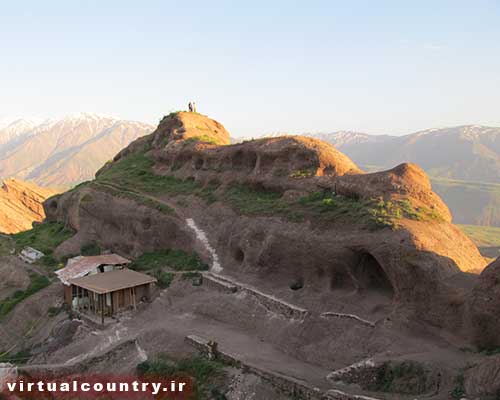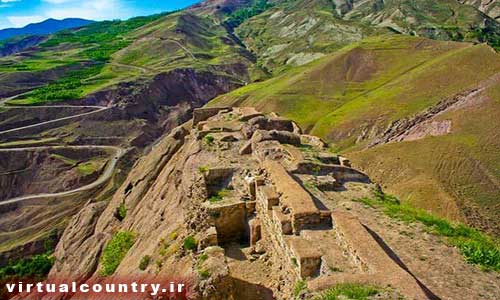Alamoot Castle, Qazvin
The said structure is situated in the heights, surrounding by gigantic precipices and deep crevices. The only means of access to this castle is by a narrow trail to its north. The Alamoot Castle has an eastern and western sector, each of which comprises of two segments again. These are the lower and upper castles. The length of the structure is approximately 120m. and its width ranges from 10-25 m. in certain areas.

The eastern rampart of the upper castle is constructed of stone and gypsum, and is about 10m. in length and 5m. in height. To the northwestern front of the upper castle, two chambers have been excavated in the rocks of the mountains in one of which is a small pool of water. At the foot of this chamber, and at a lower level than the structure, is the northern rampart with a length of 12 m. and width of 1 m. The same ending in a steep precipice. To the eastern section of the castle the guards and their dependants resided. The western rampart of this sector is still standing to an elevation of 2 m. Here there are three water reservoirs excavated in the breast of the mountains.Between the upper and the lower castles is an area surrounded by ramparts, that divides the sector into two. Three towers in the northern, southern and eastern corners can still be observed. The only entrance and gateway to the castle is in the northeast.
The path leading to the entrance is at the foot of the eastern tower, which is a few meters lower down. The various parts of the castle have been constructed with materials such as stone, mortar, gypsum, brick, tiles and earthenware. To the west of the castle is an ancient cemetery of Asb-e-Kaleh Chal. On an elevation near by, are remnants of a few brick kiln furnaces. According to records in the book Nishat-ol-Qolub by Hamdollah Mostowfi, the Alamoot castle is a construction of the 446 AH., contemporary to the reign of the Abbasi caliph, Al Motevakel.
